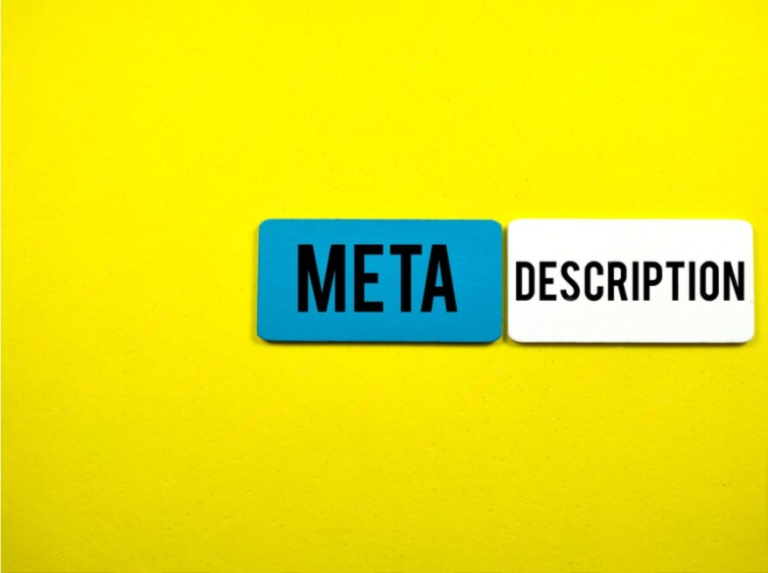How to Build a Successful SEO Strategy in 2024
Getting noticed online is crucial. That’s where SEO (Search Engine Optimization) comes in. To succeed in 2024 and beyond, having a solid SEO strategy is key. It’s like having a treasure map that guides people straight to your website. But with technology and search engines evolving constantly, creating an effective SEO plan is more important than ever. Let’s dive into the essential steps and tips you need to know to craft a winning SEO strategy that boosts your online presence and helps your website shine in the competitive digital landscape of 2024. A robust SEO strategy remains the cornerstone of online visibility and success. As we step into 2024, here’s your comprehensive guide to formulating an effective SEO strategy that resonates with the latest SEO trends and algorithms. Learn how to improve SEO and elevate your website’s visibility today!
What is SEO Strategy?
An SEO strategy is a plan to make a website more visible in online searches. It involves using specific techniques to improve a site’s ranking on search engine results pages, like Google, so more people can find it easily when they search for related topics or products.
An SEO strategy is like a game plan for making a website show up higher and more often in search results on places like Google. It’s about using smart tricks and techniques to make sure your website appears when people search for things related to what your website offers. This involves using the right words, making the website easy to navigate, and getting other websites to link to yours, also known as Link Building for SEO. The goal? To get more people to visit your site when they’re searching for something online.
Steps to Create SEO Strategy for 2024
- Make a list of important keywords to use.
- Analyze the first page of Google and see what’s there.
- Add a hook
- Create something new or better than what’s already out there.
- Optimize For On-Page SEO
- Optimize For Search Intent
- Build a clear and organized content layout that is easy to read.
- Get other pages to link to your page.
- Optimize your content better over time and keep it up to date.
Make a list of important keywords to use
Crafting a list of keywords is a crucial step in an SEO strategy. Creating a list of keywords involves pinpointing specific words or phrases that people might use when searching for something related to your website or business. This is like identifying the secret code that leads people straight to your digital doorstep. To begin, you’ll want to delve into tools like Google Keyword Planner, SEMrush, or Ahrefs. These tools act like treasure chests, revealing valuable keywords relevant to your niche or industry. They help uncover words or phrases that are popularly searched for but aren’t fiercely contested by other websites. It’s not just about finding any words; it’s about discovering the ones that have the best chance of boosting your website’s visibility. You’re looking for that sweet spot – keywords with decent search volumes (meaning lots of people are looking for them) but with relatively lower competition, try to find low competition keywords (so it’s easier for your website to stand out). Crafting this refined list is like choosing the perfect combination to unlock the doors to more visitors and potential customers for your website.
let’s dive deeper into the process of creating a list of keywords:
1. Understanding Your Audience and Niche:
To start, it’s crucial to understand your target audience and the niche your website belongs to. What are the specific topics, products, or services that your audience is interested in? Understanding their needs, preferences, and the language they use while searching is key. Tools like Google Analytics or social media insights can provide valuable data about your audience’s interests and behaviors.
2. Keyword Research Tools:
Utilizing keyword research tools such as Google Keyword Planner, SEMrush, or Ahrefs is a game-changer. These tools act as a goldmine, providing insights into popular search terms, related keywords, and their search volumes. For instance, Google Keyword Planner offers search volume data and suggests related terms, while tools like SEMrush or Ahrefs provide competitive analysis, helping identify keywords your competitors are ranking for.
3. Long-Tail Keywords and Intent:
Consider using long-tail keywords, which are more specific phrases that cater to particular searches. They may have lower search volumes, but they often have higher conversion rates as they align more closely with user intent. Understanding user intent – whether it’s informational, navigational, transactional, or commercial – helps in targeting keywords that match what users are seeking.
4. Balancing Search Volume and Competition:
Finding the right balance between search volume and competition is crucial. High search volume indicates a lot of people are searching for that term, but it also means more competition. Lower competition means it’s easier to rank for that keyword, but it might have fewer searches. Tools help in identifying keywords with decent search volumes and manageable competition, allowing your website to rank well and attract relevant traffic.
5. Regular Updates and Refinements:
Keyword research isn’t a one-time task. Trends change, new terms emerge, and user behaviors evolve. It’s essential to regularly update and refine your keyword list based on current trends and shifts in your industry. Staying adaptive ensures your website remains visible and aligned with what your audience is searching for.
By understanding your audience, using effective tools, considering user intent, and maintaining an adaptable approach, you’ll create a keyword list that significantly boosts your website’s visibility and attracts the right visitors.
Analyze the first page of Google and see what’s there.
When you’re aiming to improve your website’s ranking on Google, one effective strategy is to dive deep into the top-ranking pages for the keywords you’re targeting. Start by examining the content structure, how it’s organized, and the topics covered. Pay attention to things like headlines, subheadings, and how they break down the information.
Take note of the length of the content. Sometimes longer articles or comprehensive guides tend to rank higher, but it’s not just about length; it’s about providing valuable and in-depth information.
Another crucial aspect is identifying the elements that contribute to their high rankings. It could be the use of multimedia like images, videos, or infographics, or perhaps they have engaging interactive features. Also, observe how they incorporate keywords naturally throughout the content.
While analyzing these top-ranking pages, aim to spot gaps or areas where you can offer something more valuable or different. Maybe they missed covering a sub-topic or didn’t address a specific question thoroughly. This presents an opportunity for you to create content that fills these gaps, provides more comprehensive information, or offers a unique perspective. By understanding what’s working well for these top pages and identifying areas where you can do better, you pave the way to create content that stands out and has a higher chance of surpassing existing rankings.
Here are some concise bullet points on how to analyze Google’s first page:
– Content Structure: Study how top-ranking pages organize their content—look at their headings, subheadings, and the flow of information. make an effective SEO content strategy.
To know about What’s The Ideal Blog Post Length For SEO, read this blog – What’s The Ideal Blog Post Length For SEO?
– Length and Depth: Note the length of content but also focus on depth and value offered. Sometimes, in-depth guides perform better.
– Engagement Elements: Identify engaging elements like images, videos, or interactive features contributing to their success.
– Keyword Integration: Observe how keywords are naturally woven into the content without seeming forced or unnatural.
– Identify Gaps: Look for areas where these top pages lack information or could be more comprehensive.
– Opportunities for Improvement: Find opportunities to offer more value, cover missed sub-topics, or present unique perspectives.
By dissecting the top-ranking pages, you gain insights into what works well and where there’s room for improvement, guiding you to create content that exceeds existing standards and boosts your ranking potential.
Add a hook
The hook in your headlines and meta descriptions is like the bait that gets people interested enough to click and visit your website. It’s all about making those few words really count and tempting users to explore further.
Attention-Grabbing Headlines:
1. Solve a Problem: “Unlock 10 Ways to Boost Your Productivity Today!”
2. Create Curiosity: “The Secret Behind Achieving Financial Freedom Revealed!”
3. Use Numbers or Lists: “7 Expert Tips for Mastering Your Workout Routine”
4. Ask a Question: “Struggling to Sleep? Discover the Ultimate Sleep Hacks!”
Compelling Meta Descriptions:
1. Promise Solutions: “Discover Quick Fixes to Your Cooking Woes in Seconds!”
2. Highlight Benefits: “Experience Unparalleled Comfort with Our New Furniture Collection!”
3. Create Urgency: “Limited Time Offer: Get Exclusive Access to Our Premium Content Now!”
Hooks in headlines and meta descriptions should promise value, solutions, or insights to grab attention and motivate users to click through to your content. Crafting compelling hooks is a crucial aspect of an effective SEO content strategy, as they entice readers and improve click-through rates. It’s about engaging the audience’s curiosity and offering something intriguing that compels them to learn more.To learn about How to create the right meta description read this blog – How to create the right meta description
Create something new or better than what’s already out there
To stand out in the online world and boost your SEO content strategy, your content must be unique or superior to existing material. This includes offering distinct value, delving deeper into topics, providing comprehensive guides, incorporating engaging multimedia like videos or interactive content, or presenting fresh viewpoints. By doing so, your content sets itself apart, giving users a compelling reason to choose it over others when seeking information or solutions.
Here are some detailed pointers:
1. Original Insights: Dig deeper into a topic, share personal experiences, or provide unique research findings that others might not have.
2. Comprehensive Guides: Create detailed, step-by-step guides that cover everything someone might need to know about a particular subject.
3. Engaging Multimedia: Use videos, infographics, podcasts, or interactive content to make your information more interesting and easier to understand.
4. Fresh Perspectives: Offer a new angle or viewpoint on a topic that hasn’t been explored extensively, providing a different take that captures attention.
5. Interactive Elements: Incorporate quizzes, calculators, or interactive tools to engage your audience and make your content more dynamic.
6. Visual Appeal: Use high-quality images, graphics, or design elements to make your content visually appealing and easy to consume. You can various image search engines for visual content.
7. User-Centric Approach: Tailor your content to address the specific needs and challenges of your audience, ensuring it’s valuable and relevant to them.
By focusing on these aspects, you can elevate your content above the rest, making it more appealing and valuable to your audience, and increasing the likelihood of standing out in the competitive online space.
Optimize For On-Page SEO
Optimizing for on-page SEO means making your website content as search engine friendly as possible. It involves tweaking various parts of your web pages to help search engines understand what your content is about and rank it better.
1. Titles and Meta Descriptions: These are like the headlines and summaries that show up in search results. By using relevant keywords and making them catchy, you increase the chances of people clicking on your link.
2. Headers: Using headers (like H1, H2, etc.) organizes your content and helps search engines figure out the main topics on your page. It also makes it easier for readers to skim through.
3. Keywords in Content: Sprinkling relevant keywords throughout your content in a natural way tells search engines that your content is related to those words without overdoing it.
4. Quality Content: Ultimately, the content should be valuable to your audience. High-quality, engaging content that answers questions or provides solutions tends to rank better. To know about how much your content’s length should be read this blog – Ideal Blog Post Length
5. Mobile Optimization: Ensuring your website looks good and works well on mobile devices is crucial. Search engines favor mobile-friendly sites.
By paying attention to these on-page SEO elements, you increase the chances of your website ranking higher in search results, making it easier for people to find and visit your site.
Optimize For Search Intent
Optimizing for search intent means making sure your content matches what people are looking for when they type something into a search engine. There are different reasons why someone might search. Some want information about a topic (informational), some are looking for a specific website (navigational), some want to buy something (transactional), and some are comparing products or services before making a decision (commercial).
To optimize for this, you need to understand the intention behind a search query and create content that fulfills that need. For instance, if someone searches for “best running shoes,” they’re likely in the research phase (commercial intent). So, you’d want your content to compare different types of running shoes, and their features, and maybe include reviews to help them make a decision.
Matching your content with what people are searching for ensures that your website appears when it’s most relevant, providing valuable information that meets the user’s specific needs. This alignment not only helps in rankings but also in satisfying the searcher, leading to potentially higher engagement and conversions.
Here are some concise pointers:
1. Understand User Needs: Identify why people search (informational, navigational, transactional, commercial) to tailor your content accordingly.
2. Create Relevant Content: Develop content that directly addresses the search intent, providing valuable information, solutions, or options.
3. Match Intent with Content Type: If users seek information, offer guides or articles. For transactional queries, provide product pages or services. Ensure your content matches the search purpose.
4. Use Keywords Wisely: Incorporate keywords that mirror the searcher’s intent. For example, “how-to” for informational queries or “buy” for transactional searches.
5. Address Different Stages: Recognize where users are in their decision-making process. Adjust content to suit those at the research phase or those ready to make a purchase.
Build a clear and organized content layout that is easy to read.
Aligning your content precisely with what users are searching for helps your website appear when it’s most relevant, improving user satisfaction and potentially increasing engagement and conversions.
Absolutely! When it comes to creating content for your website, making it visually appealing and easy to read is crucial. Designing your content with the user in mind can significantly impact how engaging and effective it is. Use a mix of text, images, videos, and other multimedia elements to create an interactive and visually appealing experience for your audience. Break down your content into smaller sections with descriptive headings and bullet points to make it easier to read and understand.
Visually engaging content tends to grab attention better than plain text. Incorporate images or infographics that relate to your topic to make your content more interesting and understandable. Additionally, use multimedia elements like videos or interactive tools to provide valuable information in different formats, catering to diverse learning preferences.
1. Visual Storytelling: Use images or videos to tell a story or explain complex concepts visually, making your content more engaging and memorable.
2. Readable Format: Organize your content with clear headings, bullet points, and short paragraphs to improve readability, especially on mobile devices.
3. Infographics and Charts: Create visual representations of data or information using infographics or charts to make it easier for users to grasp key points.
4. Video Integration: Incorporate videos or animations to demonstrate processes, provide tutorials, or showcase products/services, offering an engaging alternative to text-based content.
5. Consistent Branding: Ensure your content design aligns with your brand’s visual identity, using consistent colors, fonts, and imagery across your website for a cohesive look.
6. Accessibility: Consider users with disabilities by using alt text for images and ensuring multimedia content has captions or transcripts for accessibility.
By focusing on content design that is visually appealing, easy to understand, and accessible, you can create a more engaging user experience that keeps visitors on your site longer and encourages them to explore further.
Get other pages to link to your page
Building links to your webpage is a crucial part of SEO. It’s like having other websites vouch for yours. When reputable websites link to your page, it signals to search engines that your content is trustworthy and valuable. This boosts your page’s authority and helps it rank higher in search results.
There are various ways to build these links. One effective method is through guest blogging, where you write articles for other websites in your field. This not only showcases your expertise but also includes a link back to your page. Collaborations with influencers or industry experts can also be beneficial. Their endorsement and link to your content can significantly enhance your page’s visibility.
Outreach to reputable websites within your niche is another strategy. You can reach out to them, offering valuable content or insights that they might want to link back to. However, it’s crucial to ensure the links come from reliable and relevant sources to maintain your page’s credibility.
Tips for Effective Link Building:
1. Quality over Quantity: Focus on getting links from trustworthy and authoritative websites rather than aiming for numerous links from questionable sources.
2. Relevance Matters: Links from websites related to your industry or niche hold more value in the eyes of search engines.
3. Diversify Your Links: Aim for a variety of links from different types of sites, such as blogs, news articles, or educational institutions, for a more natural link profile.
4. Engage in Relationship Building: Building relationships with other website owners or influencers can lead to more organic link opportunities over time.
5. Monitor and Maintain Links: Regularly check your links and ensure they’re active. Broken links can harm your SEO efforts.
6. Create Shareable Content: Develop high-quality, engaging content that others naturally want to link to and share, making link building easier and more effective.
By employing these strategies and pointers, you can effectively build links to your page, enhancing its authority and visibility on search engines.
Optimize your content better over time and keep it up to date.
Improving and updating your content is a vital aspect of maintaining a strong online presence. It involves more than just creating content; it’s about consistently refining and enhancing what you already have. By revisiting your existing content, you can ensure it stays current, valuable, and continues to rank well in search engines.
Regularly revisiting your content allows you to assess its performance, relevance, and accuracy. You can update information that might have changed over time, ensuring your content remains reliable and trustworthy. For instance, if you’ve written about industry trends or statistics, refreshing these details with the latest data keeps your content up-to-date and credible.
Additionally, incorporating new insights and developments into your content helps maintain its relevance. As industries evolve and new information emerges, integrating these insights into your existing content ensures it stays valuable to your audience.
Moreover, by refreshing your content, you enhance its ‘evergreen’ quality. Evergreen content remains useful and applicable over time, attracting ongoing traffic and engagement. It positions your website as a reliable source of information within your niche.
1. Content Audits: Schedule regular content audits to identify pieces that need updating or improvement. Tools like Screaming Frog or SEMrush can help analyze your content’s performance and relevance.
2. Keyword Optimization: Review and optimize existing content with relevant keywords. Tools like Google Keyword Planner or Ahrefs can assist in finding trending or high-ranking keywords for your niche.
3. Quality Check: Ensure content readability, relevancy, and accuracy. Tools like Grammarly or Hemingway Editor help polish language and readability.
4. User Engagement: Analyze user feedback, comments, or queries to identify areas needing improvement or clarification in your content.
5. Visual Updates: Consider adding new visuals, such as updated graphics, videos, or infographics, to enhance content appeal and engagement.
6. Promotion and Re-sharing: Once updated, promote your refreshed content across social media platforms or newsletters to re-engage your audience and attract new visitors.
Regularly improving and updating your content not only maintains its relevance but also helps solidify your website’s authority and credibility within your industry.
Wrap Up
Mastering SEO in 2024 demands adaptability and precision. With a focus on keyword optimization, content differentiation, and user intent, your strategy gains strength. Command your digital presence by continually updating and enhancing content, fostering valuable connections, and delivering an unparalleled user experience. As you forge ahead, embrace innovation, stay agile, and let your SEO strategy be the guiding force that propels you to the forefront of search rankings, ensuring sustained success in the dynamic online landscape of 2024.






